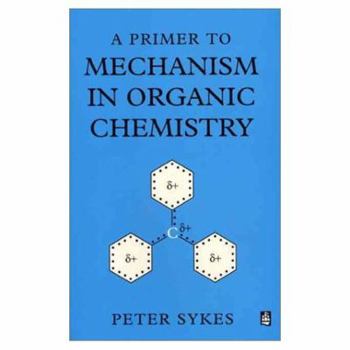A Primer to Mechanism in Organic Chemistry
A simpler, less sophisticated treatment than the Guidebook, providing a basic understanding of the mechanism of organic reactions. This description may be from another edition of this product.
Format:Paperback
Language:English
ISBN:0582266440
ISBN13:9780582266445
Release Date:January 1996
Publisher:Prentice Hall
Length:192 Pages
Weight:0.65 lbs.
Dimensions:0.5" x 6.1" x 9.2"
Customer Reviews
2 ratings
Primer Review
Published by Thriftbooks.com User , 23 years ago
This is a very good book for understanding the basics of organic reactions and synthesis. I found Syke's Guidebook disorienting and hard to follow, even tho I know it is full of excellent information. But why is it, that while everyone agrees that OChem is very overwhelming and complicated - so many books on the subject are also overwhelming and complicated. That being so, I have given up and try and work with these books as they are. Syke's Primer is a good begining and concentrates on the three basic forms of reactions: addition, substitution and elimination; and then the basic reasons behind the reactions: nucleophilic, electrophilic, etc. That's pretty simple and he repeats himself through the whole book. I felt it was simplistic but then it's really not a simple topic and I might as well as learn it over and over and in different ways. I am not proud and Ochem is humbling, it's like waking up in a foreign country and having to speak a new language, always subtle (and big) mistakes, and lots of repetition. Now I feel more confident with Syke's Guidebook, and its excellent index. This is an excellent first book for begining students and others who really want to understand the basics and go from there.
A clear guide to mechanistic organic chemistry
Published by Thriftbooks.com User , 24 years ago
A Primer to Mechanism in Organic Chemistry provides a straightforward and simple account of the mechanistic principles underpinning organic chemistry. Instead of dividing organic chemistry by functional groups, as most standard chemistry textbooks do, Sykes adopts a new and original approach to explaining the topic. Reactions are divided into substitution, addition and elimination; reagents are either nucleophiles, electrophiles or radicals; and there are only two effects which influence the behaviour of a bond or group within a molecule, that is, electronic and steric. Hence, this enables the systematic study of the vast topic area of organic chemistry.The first chapter is an introduction outlining the basic principles and terms commonly used in organic chemistry, such as functional group, types of reactions and bond polarity.From there the text is divided into the three types of reactions, with a chapter dealing with each of the reaction-reagent types, such as nucleophilic substitution, radical addition, electrophilic elimination and so on.Within each chapter each reaction is dealt with carefully giving a clear explanation why a specific reaction occurs via the pathway it does, providing the supporting experimental evidence wherever possible. To ensure that each of these explanations is as straightforward as possible there is no discussion of bonding involving orbital theory or chemical energetics.Each chapter is, on the whole, clearly illustrated with comprehensive cross-referencing between each of the chapters. The key points are re-stated in the summaries at the end of each chapter.However, I feel that the text would be improved by careful analysis of each of the figures. The prime example being [5.17], p.75, which is clearly incorrect; but other inaccuracies also exist. The text would also benefit from a further reading section, especially as it is stated to be a less sophisticated guide to organic mechanisms.On the whole, A Primer to Mechanism in Organic Chemistry provides a fresh, easy to follow and well illustrated, with diagrams and examples, account of mechanistic organic chemistry. The text covers the majority of mechanisms necessary at the undergraduate level.





